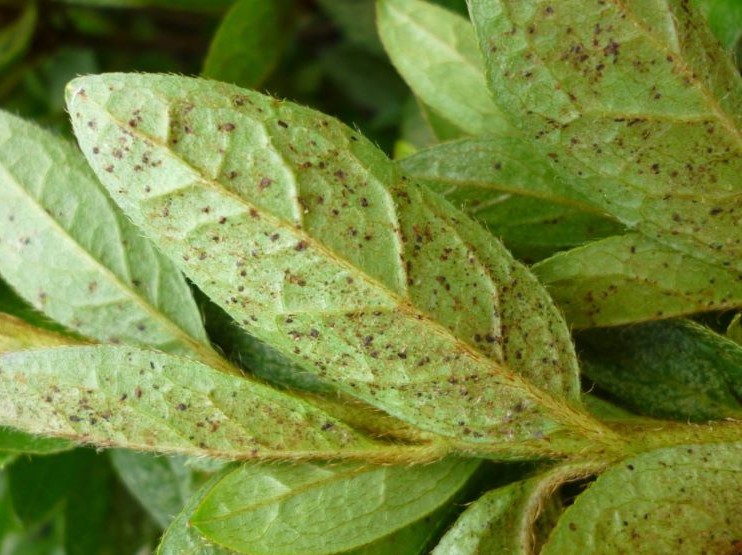Evergreen Lace Bugs (Stephanitis spp.)
Azalea Lace Bug: GDD Window (base 50): 118 (egg hatch), 118-372 (1st gen nymphs)
Andromeda Lace Bug: GDD Window (base 50): 115 (egg hatch), 115-279 (1st gen nymphs)
Overview:
- Andromeda lace bug (Stephanitis takeyai), azalea lace bug (Stephanitis pyrioides), and others
- Overwinter as eggs in the lower leaf veins
- Oval shaped wings with rounded corners
- Top of wings, head, and thorax are composed of many raised ridges, which give a lacelike appearance
- Adults are cream-colored with patches of black or brown
- Dark X-shaped mark on the wings
- Nymphs are tiny and much darker in color than adults, casting skins on lower leaf surfaces
- Cause foliar discoloration from sucking, reduced plant vigor, premature leaf drop, chlorosis or stippling on upper leaf surface
- Nymphs and adults can hide on underside of leaves
- Excrement on underside of leaves is black
- Damage can be more severe in sunny sites
- Host plants: Evergreens (andromeda, azalea, rhododendron, mountain laurel)
Management:
Cultural Practices:
- Natural predators: green lacewings, mites, assassin bugs
- Lacewing larvae can be released to reduce damage
- Reduce plant stress
- Avoid planting in sunny locations
- Keep the soil beneath the plants bare
- Syringing
Materials:
- Contact insecticides:
- Carbamates [1A]: carbaryl
- Pyrethroids [3]: permethrin, bifenthrin
- Organophosphates [1B]: acephate (translaminar)
- Systemic insecticides:
- Avermectins [6]: abamectin
- Neonicotinoids [4A]:imidacloprid, dinotefuran
- Soil injection of imidacloprid will be effective for 1-2 years
- Considerations:
- Will harm non-target species
Biorationals:
- Horticultural oils
- Will not control eggs, but can suppress nymphs and adults
- Insecticidal soaps (same as above)
- Diamides [28]: Chlorantraniliprole
- Considerations: apply to the underside of leaves





Disclaimer – Materials do not cover all possible control scenarios and are intended for licensed professionals. Tradenames do not imply endorsement and are used as examples. You must strictly follow the label for each compound prior to use. Rutgers is not responsible form is used materials or damages thereof. The label is the law. Labels will provide detailed information on use and restrictions. Additionally, application intervals, compatibility, surfactant use, PHI, PPE, important and other key information is described in detail. Always discuss treatments with your local agents. Note: Neonicotinoids can only be legally applied in commercial agriculture settings by licensed applicators. Guidelines and recommendations made in this presentation are specific to the state of New Jersey.
